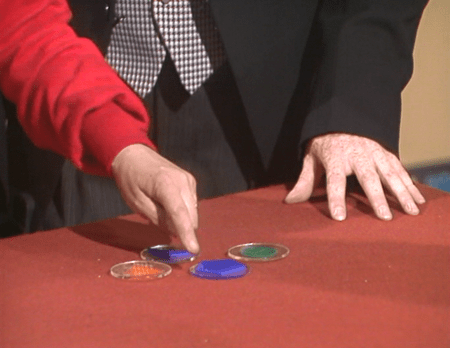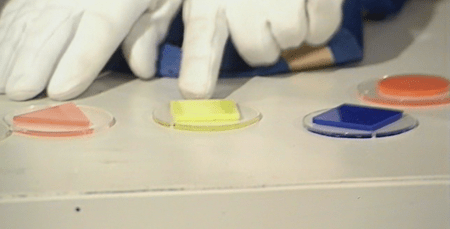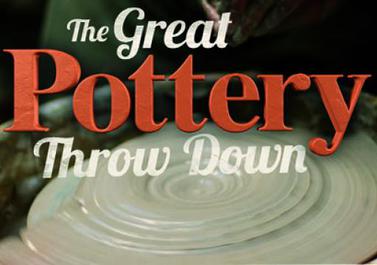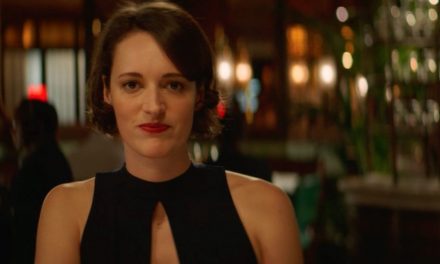1991 was a bit of a disappointing year in some respects. I had my first redundancy in the electronics industry and also saw the first UK network television screening of the smash-hit slice of dystopia Mad Max (1979).
Now, I’d had this movie oversold to me across the preceding decade and – sadly – Max’s level of sustained madness didn’t quite live up to the sheer comic-book quantities of violent carnage-filled excess insanity which had played in my mind as a result of comments from professional critics and amateur friends. He was not quite as unrealistically ‘mad’ as the hype and my warped imagination had promised me. He was more… grieving? Angry? Comparatively restrained? ‘Mad’ was too strong a word. Miffed Max… that was more like it by comparison to the film which had played in my mind.
And none of this was Max’s fault. He was really very understandably mad indeed, and it’s a great film.
But miffed was kind of how I felt the other night when nocturnal channel hopping alighted on 80’s: The Best of Bad TV (2015) on a channel which probably had the number 5 somewhere in its name. And amongst the television detritus dredged up for me to scorn was The Adventure Game (1980-1986), which to my way of thinking was a quite wonderfully odd game show aimed at a younger audience.
Also – let me make clear – that in the same way that I now admire Mad Max and his levels of justifiable mental disorder through his tragic experiences, I do not have a downer on shows like The Best of Bad TV. They do their jobs. It takes skill to assemble these shows – more skill than I have. Furthermore, I come from an age where any broadcast of archive television extracts is still fallen upon with ravenous hunger… from the days when the only place to even glimpse Fireball XL5 (1962-1963) was Those Wonderful TV Times (1976-1978) or when you tuned weekly to Windmill (1985-1988) in the hope of being occasionally rewarded with a chunk of The Telegoons (1963-1964).
So, I was miffed. Bad television – especially entertainment series – makes me disappointed… not mad or angry. Angry is something which I generally reserve for special use regarding issues outside The Box – when one sees bullying in the workplace or domestic abuse or people losing their jobs or irrational injustice. You know – Big Stuff. Miffed is nearer the mark for adventure shows, sitcoms and clips compilations.
Anyway, here I was miffed because The Adventure Game really was an extraordinarily off-beat element of my formative years. The format was that three time travelling members of the Galactic Archaeological Society – an entertainer, a scientist and a member of the public – arrive on Arg (“a small planet of little consequence”) where the crystal vital for their time machine is “nicked” by the Argonds, “a polite race” with “a sense of humour” who set a series of puzzles that the trio must solve before they can leave. The reptilian Argonds in their true form resemble dragon-like aliens left over from shows such as Blake’s 7 (1978-1981), but – being polite – quickly adopt human identities such as broadcaster Moira Stuart. The theme tunes to this high-tech SF Escape Room escapade are bereft of stylish synths akin to Jean-Michel Jarre, favouring instead a John Williams and Julian Bream performance of Ferdinando Carulli’s Duo in G, Op. 34 No 2: Rondo or a brass band recording of Edward Grieg’s Norwegian Dance Opus 35 No 2. It’s that kind of a show. Only on the BBC…
So, take just one section of an early entry featuring member of public Toby Freeman, Dr Garry Hunt from The Sky at Night (1957-) and eccentric writer-performer Denise Coffey best known from Do Not Adjust Your Set (1967-1969). First of all, they need to realise that the only way to get the four ball bearings in the balance game to the four corners of the puzzle – which is secured down on a central spindle above a horizontal hatch – is to spin the puzzle itself, therefore using centrifugal force to propel the balls outwards. With the balls in place, the electric circuit is connected and the straps released to the hatch which can now be opened, revealing both another hatch – which can be opened with a key – and a 78rpm gramophone record. The metal key to open the second hatch is plainly visible at the bottom of one of two clear plastic tubes which are too narrow to get one’s hand down to retrieve it. There is a gramophone, but it has no stylus nor speaker, nor will it play when wound. Beside the tube with the key is a second tube with a ping-pong ball. When one of the travellers stands on a hidden pressure pad, this activates an air current which blows the sphere to the top of the tube – thus allowing it to be retrieved by one of their colleagues. The ping-pong ball tells them that ‘The crystal is behind the shutter’ – so if they stand by the wall shutter, another hidden pressure pad plays music and illuminates a sign indicating that the Ladies’ is now ‘Vacant’ (in fact this would appear to be a blind alley – Denise enters and is scared out by an Argond).
A jigsaw puzzle tells them ‘If you want to be attractive, look in the cupboard’. They find a cupboard which – like every other sign in the room – has its name written in reverse (SMOORB). Realising that being in reverse means they need to spin the cupboard around (BROOMS), they open the rear cupboard door to discover a number of items – amongst which they need to know that they can use an iron bolt and a length of insulated wire to create an electro-magnet to retrieve the key. To create an effective magnet, they need over 700 windings of the wire – which they can do quickly by taking the hand drill and securing it in the vice on the workbench, on which there is also a sewing basket containing a needle which they can use to hear the record. Folding a piece of paper to form a cone and locating a third pressure pad to spin the turntable, they can hear the record which plays Tchaikovsky’s 1812 Overture. This tells them that the code for the combination padlock on the exercise bike is 1 8 1 2. With the bike released, they can use the AC dynamo on the bike – altered to DC, naturally – to power the electromagnet, dangle it into the tube, retrieve the key and open the second hatch which contains a telephone.
On one wall is a montage of different types of transport, all of which carry different numbers. During all this, a butler has brought in a shape puzzle which – when assembled – shows an aircraft. This means that it is the number on the aeroplane in the montage – 54040 – which is what they need to dial on the telephone to speak to the Rangdo of Arg (who this week looks like Ian Messiter [i]) who agrees that they have won the right to have their crystal returned.
I think we’re agreed that this makes The Crystal Maze (1990-1995,2016-) – itself another very worthy show – look rather more like one of those quizzes that used to appear on commercial channels around 3am offering you a major cash win if you know whether the first letter of the alphabet is a) A, b) B or c) C and phone your answer to a premium rate phone line.
And the above is only the last third of the programme – which, judging by the number of fade-to-black time passage indicators must have taken hours (if not days) to record. The second part of the show is televised coverage of a text-based adventure game played on a computer – a piece of equipment which at the time is so new that it would appear that Denise had never encountered before and indeed so specialist that there is a special ‘thanks to’ credit for Hewlett-Packard Ltd.
The other great thing about The Adventure Game is that many elements aren’t explained – they have to be deduced by both time travellers and home viewers. What is the best present for Uncle? He likes ballads, but not songs. He’s quite fond of a roll. A green cheese roll would be very nice. And what is each coin in the drogna based currency system worth? The Argonds aren’t telling you – they expect you to work it out. And as for knowing how many Argonds are around the pond… there’s still a few people who decades later aren’t sure how that one works.

Fig 3: We think that there’s five Argonds around the pond here. How many do you think there are? [ii]
Andrew Pixley is a retired data developer. For the last 30 years he’s written about almost anything to do with television if people will pay him – and occasionally when they won’t. Look, don’t waste your time reading this bit! Have you read Leanne Weston’s brilliant piece about BBC Four? That’s far more important. For a start off, it’s the one channel where they might even repeat The Adventure Game. Go and read that and then phone the BBC and tell them that you don’t want BBC Four to vanish either. On BBC Four, you can tune into the rather wonderful Kermode and Mayo’s Home Entertainment Service (2020-) and discover that Mark Kermode’s only got the old soundtrack release for UFO (1970-1971) and hasn’t upgraded to the new one yet.

Bonus Fig: You can find the new release here.
FOOTNOTES
[i] … yes, as in the man who created Radio 4’s Just a Minute (1967-Around the same time Doctor Who finishes).
[ii] Ah-ah! No clues. You have to do this on your own or not at all.







